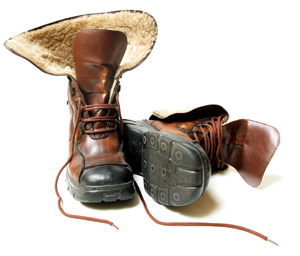Hiking and trekking trips allow visits to be made to relatively inaccessible locations, and may consequently be good for landscape, wildlife and rural life photography enthusiasts. Participants must nevertheless carry all their equipment, perhaps on their backs, and operate under difficult conditions - perhaps from horseback, a backpack or a tent. Restrictive living conditions make life considerably more difficult and demand greater discipline on the part of the photographer. Equipment must be protected from the elements and regularly cleaned, and film must be stored in an orderly and secure manner. Film should be sealed in canisters or plastic bags, and properly labelled once exposed. All this may have to take place in inconvenient circumstances with limited artificial light.
 |
| Public domain image by Zsuzsanna Kilian - freeimages.com |
Major considerations on this sort of trip are the weight and volume of baggage. Photographic equipment is heavy and relatively bulky when properly packed, but must remain readily accessible. Think carefully about the type of bag you use to carry your gear. Backpacks are an obvious choice but may be half-filled with clothing and other personal items. On organized trips where teams of porters carry most of the camping gear and food, a tailor-made photographic backpack is ideal. However, if you are travelling alone or in a small group, and need to carry everything you require, the problem needs more careful consideration.
Digital equipment is arguably less robust than a traditional film camera, and this should be a consideration when planning a hiking trip. Portable computers and hard disks do not like shock treatment, and dust and dirt are always hazards. Battery life is also a major consideration when using digital equipment or to a lesser extent, electronic film cameras. Make sure that you carry adequate spare batteries and that the means of recharging rechargeable cells is available en route.
At high altitude, and under canvas, low temperatures may become a problem. I have camped above 18,000 feet and awoken to find icicles on the exterior of my sleeping bag. Under such conditions key items, such as cameras and batteries, should be kept inside your sleeping bag in sealed plastic bags. On horseback it is essential to be well organized and have items of equipment attached to your body. It is all too easy to drop something when the horse moves and watch it roll away down a hill. Many a lens cap ended its service in this way in Grand Canyon.






